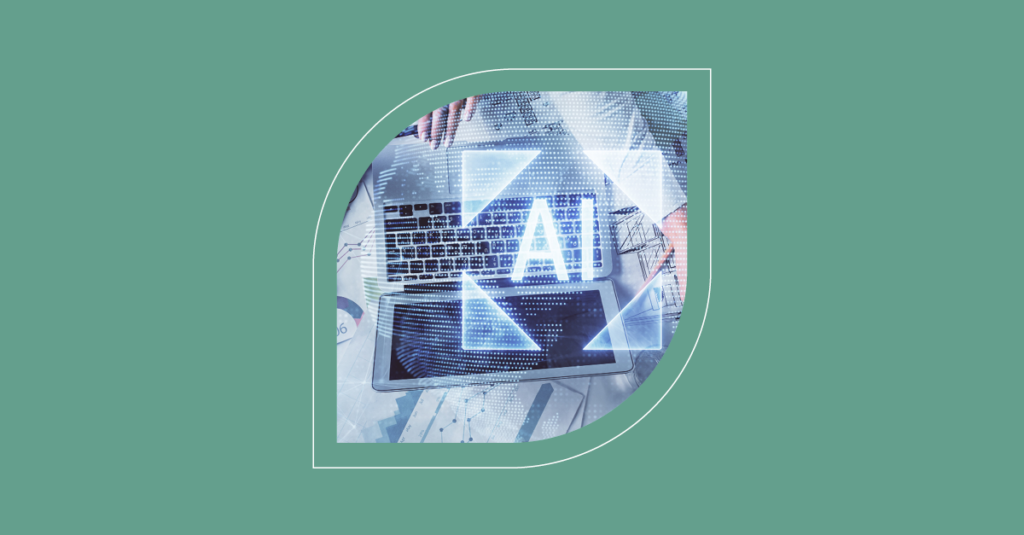5 ITSM Trends and Predictions for 2020

Wow. It doesn’t seem a year since I wrote my IT service management (ITSM) Trends and Predictions for 2019 blog but I guess time really does fly when you’re having fun. Now it’s time for a similar 2020 blog, with “similar” a very suitable word to use given that much of what changes in ITSM does so across multiple years.
Please read on to find out what I see as the key trends for ITSM in 2020 and beyond, starting with the areas that have rolled over from 2019 (and even earlier).
This article looks at the biggest #ITSM trends and predictions for 2020, from staff #wellbeing to the impact of #ITIL4. Click To TweetThe ITSM trend rollover from 2019 (and some quick reflection on them)
Last year, I called out five trends and predictions for 2019. I’ve listed these below plus a quick summary of what has happened:
- AI will move beyond the hype to help with specific ITSM, and especially IT support, tasks. AI definitely took off in ITSM in 2019 – from the addition of AI-enabled capabilities in ITSM tools to the percentage of those who are starting to use them. ITSM industry surveys showed this in 2019, as well as there still being a high proportion of organizations still waiting to move on AI. It’s also increasingly prevalent in our customer conversations.
- Words and phrases such as “value,” “customer/employee experience,” and “business outcomes” will be a bigger part of the ITSM lexicon (and approaches). Bingo! 2019 was full of these words, including the emphasis that the new ITIL 4 placed on value – from the Service Value System to the ITIL Guiding Principles.
- The many people challenges (and opportunities) in ITSM will finally start to be addressed. Where do I start with this one? If I was a teacher writing a pupil’s school report it would be along the lines of “must try harder.” To back this need, SysAid’s Future of ITSM survey found that 84% of respondents think that working in IT will get harder over the next three years. Plus, that just over half of respondents feel that working in IT is adversely affecting their personal wellbeing.
- ITIL 4 has one shot to get it right. Personally, I think it did with the Foundation publication and its focus on value creation. I’ve yet to see the more detailed ITIL 4 guidance (for the higher-level publications and exams) but I remain confident that it will fill some important gaps in ITIL v3/2011 in addition to rightly focusing ITSM activities on value creation.
- Much of what I called out for 2018 will continue at pace. It did, especially the continued growth in enterprise service management adoption.
Which leads me on to the first ITSM trend for 2020…
Trend 1: Enterprise service management will be absolutely mainstream
Enterprise service management will absolutely become mainstream in 2020 - @SarahLahav #ITSM Click To Tweet I first called out the growth in enterprise service management adoption in my 2018 trends and predictions (and it continued in 2019). In 2020, I have no doubt that enterprise service management adoption will continue to grow as it supports corporate back-office digital transformation initiatives. This was shown in the SysAid Future of ITSM survey, where two-thirds of respondents stated that their organization either has or is planning to develop an enterprise service management strategy. We’re also seeing it with our customers who are taking their ITSM best practices and enabling technology outside of IT to support other business functions such as human resources (HR) and facilities. For example: [su_note note_color=”#ebebeb” text_color=”#000″]Isai Quintas, Processes & IT Manager from Sintec is currently using SysAid for enterprise service management:“SysAid gives us a window into the performance of all the departments across our organization.”
[/su_note]
[su_note note_color=”#ebebeb” text_color=”#000″]Maximilian Haag, Systems Administrator, Söhner is planning to use SysAid for enterprise service management in the future:
“In the more distant future, Söhner will look to embrace enterprise service management, as other departments across the organization, e.g. HR, start to deploy SysAid to handle their own workflows more efficiently.”
[/su_note]
Trend 2: AI will be increasingly considered in a pairing of “AI and advanced automation”
As AI adoption continues, the types of common ITSM use cases employed will help people to see that while AI might make decisions on “what to do next,” it is automation that will be used to “do that next thing.” Hence, AI and automation will be the ITSM capability that makes the difference, not just AI alone. SysAid sees the most beneficial AI and automation opportunities employing service orchestration, and chatbots in particular.
And we’re seeing customers like Allan Osborn, IT Technical Operations Analyst from Spicerhaart looking forward to increasing the role of service orchestration at their service desk:
In 2020 while #AI might make decisions on what to do next, it'll be #automation that is used to do that next thing. - @SarahLahav Click To Tweet
Trend 3: Staff wellbeing will finally be seen as a ticking timebomb for ITSM
Wellbeing has increasingly become a hot topic within IT, and for IT support in particular. In our Future of ITSM survey in the first half of the year we found that:
- 84% of respondents think that working in IT will get harder over the next three years.
- Only one-quarter of respondents feel that their efforts and value are sufficiently recognized by management versus 72% of respondents who feel “undervalued” to some extent.
- Just over half of respondents feel that working in IT is adversely affecting their personal wellbeing.
Sadly, a different, “wellbeing in ITSM”-focused survey six months later found that things are getting worse, not better:
- 86% of survey respondents think that working in IT is going to get harder in the next three years, with only 9% thinking not.
- 83% of survey respondents feel undervalued in their jobs.
- 71% of survey respondents state that working in IT has adversely affected their wellbeing to some extent, 21% considerably.
Surely, we’re now at the point of no return when it comes to people – with it necessary to invest more in ensuring that IT provides a suitable working environment and work. If we don’t, then who is going to want to work in IT long term?
In 2020, staff wellbeing will finally be seen as a ticking timebomb for #ITSM says @SarahLahav. Click To TweetTrend 4: The delayed emergence of ITIL 4’s impact on the ITSM status quo
ITIL 4 is getting close to being a year old now. Plus, importantly, higher-level guidance is being added to the initial Foundation publication (and exams) in early 2020. And I don’t think anyone, perhaps other than the authors, expected ITIL 4 to be such a departure from the earlier versions.
Of particular note, before I even talk about ITIL 4’s impact on the ITSM status quo, I’d be remiss if I didn’t mention ITIL’s increased focus on value and on value co-creation in particular. While I called it in my 2019 predictions, I didn’t expect the new version of ITIL to be completely redesigned around the need for service providers to focus on customer value.
[su_note note_color=”#ebebeb” text_color=”#000″]In a conversation with one of our customers at Allen City Hall in Texas, they said they’re using automation capabilities that focus on value:
“IT administrators have been freed from routine organizational work and are now able to focus on their higher value contributions.”
[/su_note]
I rest my case ☺
In any event, now that the dust is settling on the new ITIL version, I expect a number of “logical consequences” to affect ITSM in 2020 (and beyond). First, and most obviously, there are the organizations that wish to migrate their ITIL v3/2011 adoption to an ITIL 4 adoption (in terms of the new structure and the associated thinking).
Then there’s the potential for organizations to adopt some of the new and changed ITSM processes (now practices) in ITIL 4. For example, IT asset management (ITAM). If ITIL 4 guidance can’t get service delivery and support organizations to do better at ITAM, then I’m unsure what will.
Now that the dust is settling on the new #ITIL version, @SarahLahav expects to see a number of “logical consequences” to affect #ITSM in 2020 (and beyond) Click To TweetFinally, there’s the impact that ITIL 4 may or may not have on ITSM tools. We’re no longer in the tight ITIL and ITSM tool ecosystem of 5+ years ago, when ITIL helped to sell ITSM tools and ITSM tools helped to sell ITIL. And, consequently, ITSM tool marketing was very ITIL focused, whereas it’s not now.
However, most large organizations will still have some form of ITIL tick box in their RFP for a new ITSM tool. And, in many ways, what happens to ITSM tools in terms of ITIL 4 will be dependent on the levels of the previous two points – with only customer demand for ITIL 4 alignment driving tool change.
Trend 5: Productivity is now the new face of employee experience
The need for better employee experience, from an IT service and support perspective, is something that’s increasingly being recognized by IT departments around the world. And it’s great that it is.
However, employee experience can be a pretty gray area for organizations, with the variety of definitions available – some of which are very consultant-esque – making it difficult for IT departments to pin down exactly what they need to focus on and to consequently improve.
Employee experience can be a pretty gray area for organizations, but @SarahLahav hopes to see this change in the world of #ITSM in 2020. Click To TweetIn 2020, I think, and hope, that this will change. With more and more organizations understanding, on the back of their focus on employee experience, that the role of IT – while still very much about value creation – also needs to have a laser focus on improving employee productivity through better service and support provision. I am hopeful for our customers though, especially given the results of our recent annual customer survey, which found (from 953 respondents) that:
- “Providing a great end-user experience” is the #1 value of using SysAid
- The #1 goal for 2020 is “improving end-user/customer experience”
- Customers that measure ‘end-user satisfaction’ as a key performance indicator (KPI) tend to be happier customers.
So, these are my ITSM trends and predictions for 2020, what would you add? Please let me know in the comments.

Did you find this interesting?Share it with others:
Did you find this interesting? Share it with others:









